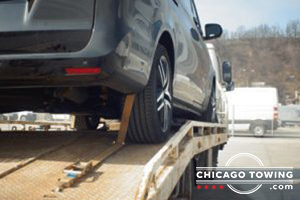Around thirty five percent of all roadways in the United States of America are unpaved, consisting of gravel and dirt rather than asphalt. Driving on unpaved roads can have detrimental affects on vehicles, while being more difficult to carry out than driving on typical roads. Here’s a guide to safely driving on unpaved roads, as prepared by the driving safety experts at Chicago Towing.
Preparedness
If you’ve never traveled on the route before, make sure to have a current map, prepared directions, and possibly a GPS device before embarking on your trip. Also make sure to check all of your tires and tire pressure (including your spare tire) and ensure that you have enough gas to get where you’re going. It couldn’t hurt to take along extra food and water, and make sure to let people know that you’re heading on your journey just in case there’s no cell phone service across the road.
Drive Slow
Unpaved roads can either be smooth or very rocky. Make sure to brake and speed up slowly to gauge how smoothly your car can handle the difference in pavement terrain, and always maintain a speed that will allow you to stop easily and safely for any passing vehicles, animals, people, or road hazards.
Be Aware of any Curves or Dips
Unpaved roads often contain dips and curves that can change your visibility, which can prevent you from seeing other vehicles or hazards. Make sure to slow down gradually as you approach any curves or dips, and stay to the right side of the road while being as safe as possible. Make sure to lessen distractions including conversations and loud music so you can have an easier time paying attention to any signs of oncoming traffic like the sound of an engine or dust in the air, and again, always make sure to travel at a speed that will allow you to easily stop if necessary.
Be aware of Loose Surfaces
Gravel, dirt, or sand can be loose – and it unpredictably appears, so make sure to drive slowly, steer gently and softly, and as much as you can, avoid suddenly speeding up or braking. Make sure to be aware of the clearance distance of your vehicle – those cars with low undercarriages need to be very careful driving in rocky or uneven terrain – and pay attention to the weather, as it only takes a bit of rain to make a dirt road quite muddy indeed.

